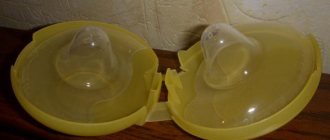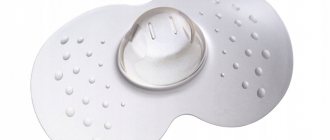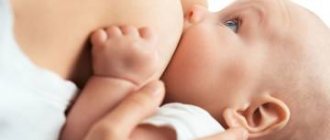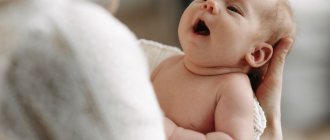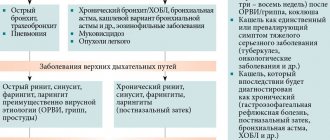What are breastfeeding shields?
Breastfeeding pads are silicone or latex products that are an excellent assistant during breastfeeding of babies in the first days of life and those who are about to be weaned from their mother's breast. With the help of such material, the process becomes simple for both mothers and babies, but in the future it can be difficult to refuse them.
Choosing the right breastfeeding pads means creating maximum comfort for mother and baby
When using breastfeeding pads, it is important to know how to use them according to the instructions, as well as to consider possible problems and problems while wearing them.
What to consider when choosing
Today, pharmacies offer a wide variety of overlay models. When choosing such an accessory, each mother should be guided by her individual feelings and preferences.
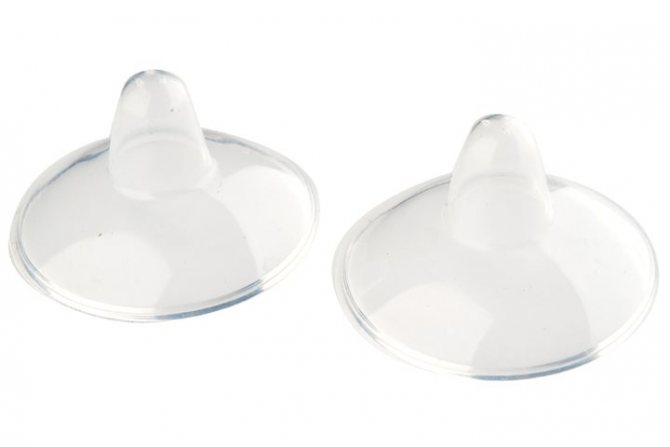
Most likely, you will have to choose your pads by trial and error, trying on different designs and trying to feed your baby in each of them. We can give only a few general tips for choosing feeding pads:
- correctly selected pads fit tightly, but do not press or fall off during feeding;
- there should be a minimum of emptiness inside the pad - when the baby makes a suction movement, the nipple should reach the tip of the product, but not put pressure on it;
- the shape of the accessory should ideally, like a second skin, follow the contours of your mammary gland;
- If by the allotted time you experience a rush of milk in the breast, then the mammary gland is completely emptied, which means that the appropriate pad has been chosen and the baby is full.
Types of breastfeeding pads
GW pads are conventionally divided into rubber, latex and silicone, each of which has characteristic properties.
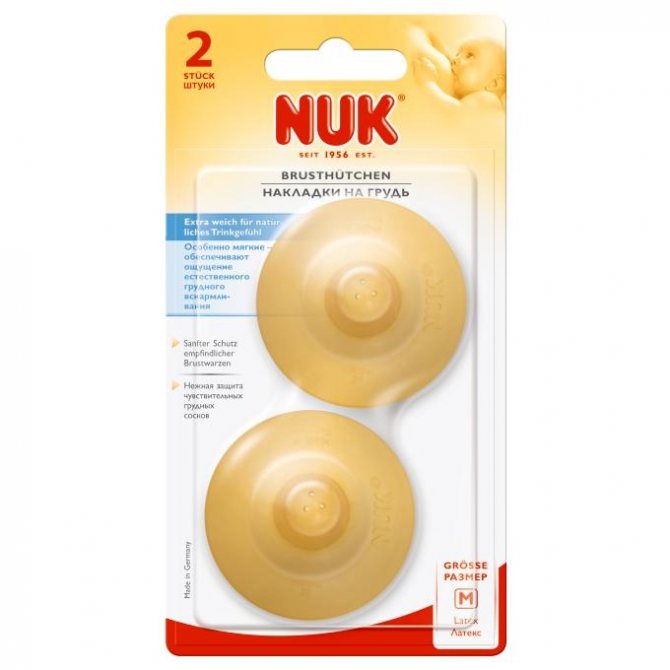
Rubber breastfeeding pads are very hard and uncomfortable
The first ones have a lot of disadvantages, since they were the first to go on sale since their production. Often these accessories have a glass or hard plastic base. They are put on the chest like nipples on bottles. Their use can lead to milk leaking into the device, as a result of which the baby does not receive the share of nutrition it needs.
Latex breastfeeding pads often have an unpleasant odor
It is also better not to choose the latter, because they have a characteristic (rubbery) smell and are distinguished by a yellow tint. These devices are not comfortable for sucking and can also injure the nipples. Often, the use of this accessory causes allergic reactions in children in the form of a rash around the lips and under the nose. Watch the video for users' opinions regarding breastfeeding pads.
Still others, according to experts, are considered an ideal option if it is necessary to use feeding pads.
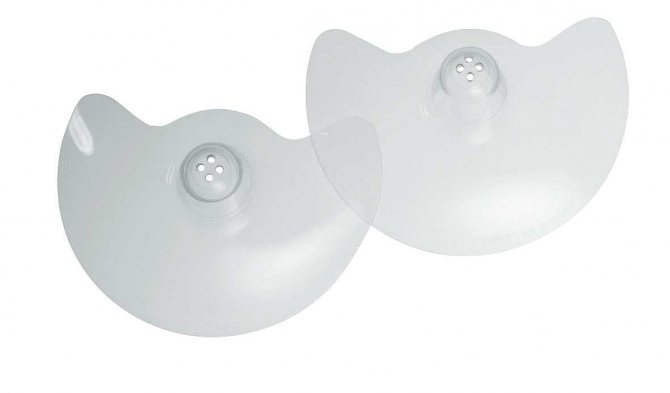
Silicone pads for breastfeeding are an ideal option for indications
Using these breastfeeding pads is a pleasure. They are wear-resistant, odorless and made of hypoallergenic materials. It’s quite easy for a baby to get milk through them.
Children say! - Mom, I immediately guessed that the dog was kind - she didn’t have a prison on her nose!
Indications of overlays for breastfeeding
Experts recommend using breastfeeding shields only in emergency cases, as they can interrupt mother-baby contact.
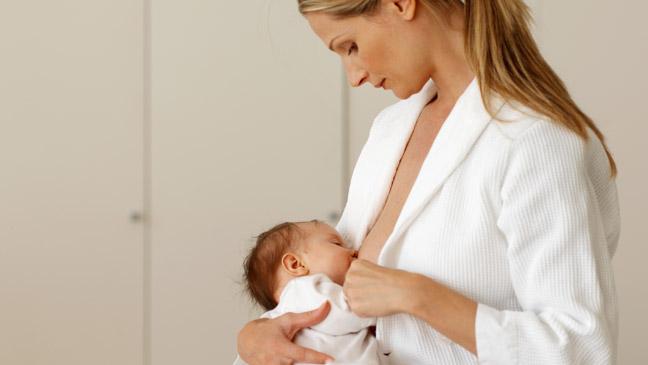
Breastfeeding shields are recommended for irregularly shaped nipples
The use of accessories on the chest is permissible in the following situations:
- the baby was born premature and is still very weak after birth, unable to draw milk from the mother’s breast. Nozzles for breastfeeding create simplified conditions for sucking;
- congenital pathologies in a child associated with an absent sucking reflex;
- the beginning of the lactation process. During this period, feeding a baby can be painful, and to alleviate this, mothers are advised to use breast shields;
- baby teething. The baby tries to scratch his gums on everything that comes into his mouth, he begins to chew and bite the nipple, which is very painful. A hot water accessory helps to cope with this;
- mother's breast problems. When cracks and wounds have formed on the nipples and areola, it is better to immediately use breast pads. They prevent further injury to the chest and will help speed up healing with proper treatment;
- abnormalities in the development of the baby’s oral cavity (cleft lip, cleft palate in a newborn) or irregular nipple shape (flat, too thick, large).
Advice! Do not use breastfeeding attachments without a good reason! The baby very quickly gets used to easier sucking, so he may refuse to extract milk from his mother’s breast on his own.
How to put on pads correctly?
You need to learn how to put these “caps” on your nipples correctly. A little practice and you will succeed! So how to use pads?
- Lightly moisten the product from the inside with water - this way it will hold better.
- Turn the cover inside out and, pressing it tightly to the nipple, turn it back so that it fits like a glove on your chest.
- The cutout of the pad should be on top - then the baby will rest his nose not on the silicone, but on the mother’s living, warm breast.
- The baby will be more willing to latch onto the breast if you drop a little milk on the product.
- As with normal feeding without a shield, the baby's mouth should cover the entire nipple areola and the area around it.
- When finishing feeding, do not forcefully remove your baby's breast. Gently cover his nostrils with your fingers and he will immediately release his breasts.
- Remove the pad, wash it with warm water and baby soap and dry it.
Caring for these chest caps is very easy. This consists of washing before and after use and sterilizing every few days. You can watch a video on how to put on the pads correctly.
In conclusion, it can be noted that you may encounter opponents of overlays who will convince you that they do more harm than good. This is a myth that has no medical basis. Enjoy this benefit of civilization to your health and don’t listen to anyone. The main thing is that your baby is fed and healthy, and that breastfeeding is a joy for you!
Problems with using breast pads for nursing mothers
Studies show that unforeseen circumstances may arise due to the use of breastfeeding shields by mothers, this is proven by reviews from doctors. Most likely this procedure will result in:
- violation of physical contact between mother and child, which is indispensable in the first year of a baby’s life;
- a woman who constantly uses attachments often develops breast thrush;
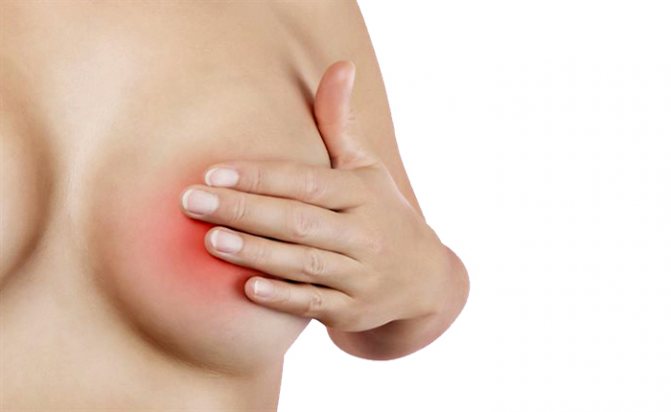
Anyone who overuses breastfeeding pads may have to deal with breast thrush
- the sucking mechanism is disrupted, the baby may develop an incorrect bite;
- Feeding takes twice as long as traditional breastfeeding;
- A large amount of air is swallowed, which causes the baby to suffer from colic and frequent regurgitation.
Based on these statements, lactation consultants conclude that it is best to avoid using breastfeeding shields unnecessarily.
Rules for choosing overlays and their storage
With so many baby product manufacturers out there, it can be difficult to choose the right nipple covers for breastfeeding mothers. Therefore, we will give examples of the most popular and proven models.
Philips Avent
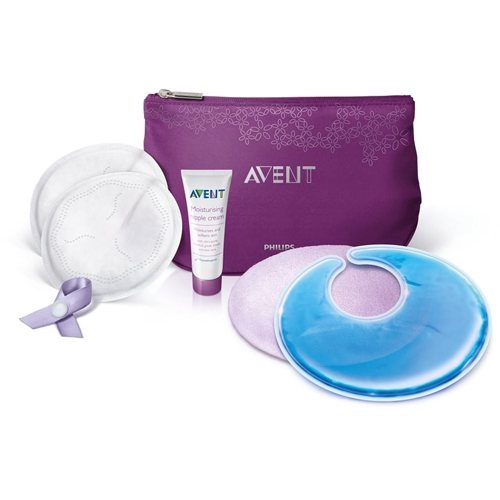
Accessories for the care and storage of breastfeeding pads
The accessory for breastfeeding is made of ultra-soft silicone and does not cause discomfort or allergic reactions in the child. Very easy to use, easy to put on and store (no special conditions for care). The pads are odorless, so it is pleasant for the child to eat through them; all the necessary sizes are available. You can buy it at any pharmacy at a price from 600 to 900 rubles. In the ranking, this model ranks first in terms of sales.
Medela pads
Devices from Medela are convenient, reliable and safe. The options protect well from breast injury and allow the baby to comfortably latch onto the breast without creating difficulties. The only drawback is that the sizes do not match. Price 500-600 rubles at the pharmacy.
Pigeon chest attachments
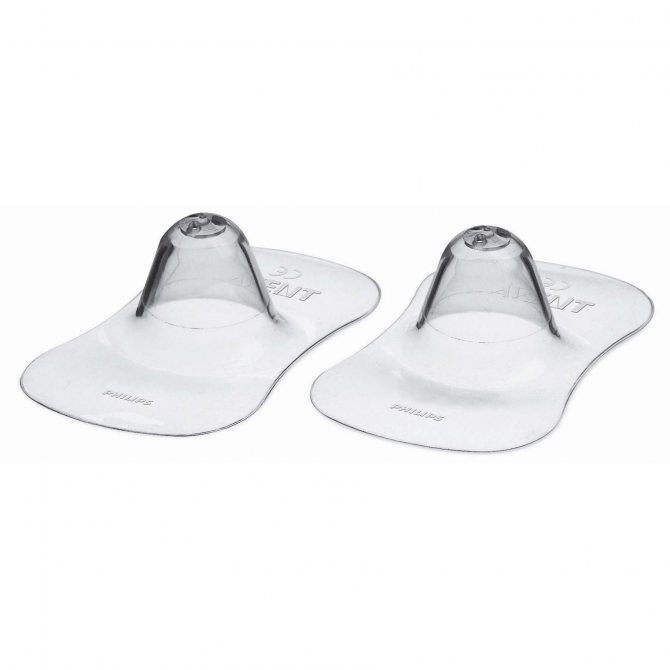
Silicone breastfeeding shields should be selected according to the size of your nipples
This product, according to women's reviews, turned out to be the most unpredictable. This manufacturer does not provide the required amount of volume; milk constantly flows under them during feeding. On the other hand, this is a very convenient thing for those who have problems with breastfeeding or struggle with wounds and cracked nipples. You can purchase this product in specialized children's stores at a price of 400 to 700 rubles per pair.
How to choose the size of a nipple shield
When choosing something like silicone nipple covers, it is important to consider several factors. The first thing they will ask at the pharmacy is the size.
Assess your size in advance so you don't have to choose at random. The size of the pads has nothing to do with breast size. We are talking about the size of the nipple.
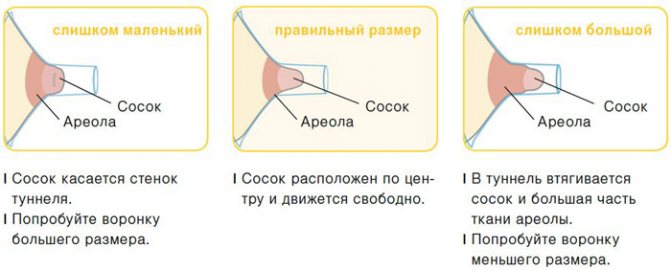
Dimensions:
| № | Size | Nipple diameter |
| 1 | S | Less than 1 cm |
| 2 | M | Exactly 1 cm |
| 3 | L | More than 1 cm |
It is not necessary to take measurements with a ruler; the size can be easily determined by eye.
Important! Silicone breast shields are often used by women who have very small nipples.
It's not about size as such; the nipple can be flat or very tiny. It is difficult for a child to put it in his mouth and start eating.
The device will solve this problem. You should choose size S and use the device until the nipple takes the desired shape.
During breastfeeding, the nipples enlarge and become firmer.
This is not the only advantage of silicone pads:
- If the baby is used to drinking from a bottle, it is easier for him to latch on to the breast.
- When a baby is born prematurely, his sucking reflex is weak. The pads make feeding easier for the baby.
- If a mother has cracked nipples, the device will help restore damaged tissue without interrupting lactation. Abortion may result in complete loss of milk.
- They are used during teething to prevent the baby from damaging the nipples.
Important! Remember that when choosing a size you need to take into account the space for the nipple to stretch out.
Subtleties of choosing breast pads for feeding
Children say! Mishuta (4 years 8 months) has a stomach ache. I say: “If you continue to hurt, you’ll have to call a doctor!” Mishuta: - I only need Dr. House. Either he comes, or - no doctors!
Careful selection is the key to successful use of nipple covers. Be sure to analyze all possible options and pay attention to:
- production quality;
- price of the device;
- presence of odor and structure of the product;
- the possibility of causing allergies in the mother or child;
- provide the desired shape and guess the size;
- density of the device (the thinner, the better it will transmit heat).
Note to moms! Breastfeeding nipple covers made of silicone are considered very popular. They are good in all respects, so we recommend choosing them.
Differences in breast attachments for nursing mothers are observed among different manufacturers. Each company has its own approach to the product of auxiliary devices. Some variations are hard and some are ultra-soft. The characteristic difference is the shade of protection, as well as its holding base, so it is important to choose the right accessory. And remember that it should be as close in size to your nipple as possible.
Feeding technique with pads

Breastfeeding covers should be worn as shown in the picture.
Before you start feeding your baby using protective silicone nipples, you should know how to put on nursing shields. This process is not complicated, but it requires care. Take the device with two fingers of your right hand, put it on the nipple as tightly as possible (it is ideal to moisten the edges of the device with water), then press all the edges against the skin so that no air spaces are formed.
The protected breast should be offered to the baby only when he has opened his mouth well. The baby's lower lip should fit as closely as possible to the areola. Do not take the breast from the baby, wait until he has eaten his fill. Monitor the baby’s weight and the emptiness of the breast: if he does not lose weight, then he is full.
How to use the pads
Newly purchased silicone breast pads require mandatory processing. Different manufacturers have different recommendations for sterilization - some products can be washed with hot water and soap, some can be boiled, and some can simply be kept in boiling water for a few minutes. Overlays cannot be used without treatment. At the same time, it is also impossible to sterilize them too often, since the silicone will not withstand such a load. 1-2 times a week will be enough, and the rest of the time they are simply washed after each feeding, like a pacifier or bottle.
For feeding to go well, you need to learn in advance how to put them on correctly, and also practice several times. It is likely that you won’t be able to “make friends” with them the first time, so you shouldn’t put off the first acquaintance until feeding - the baby will cry and ask for the breast, the mother will be nervous, and it will be more difficult to put on the pad correctly.
Before putting on the shield, you need to lightly massage the nipple. Then the cover is turned inside out, the bottom of the cap is pressed against the nipple and turned back. The material should fit snugly against the skin of the chest, but not squeeze it. If you believe the reviews, slightly damp silicone attaches much easier and more reliably; you can moisten it with water or a drop of milk. The cutout should be at the top, since that is where the baby's nose will be located. The nipple should occupy most of the space of the cap, but not rest against its tip. During feeding, the baby will draw the nipple into the shield and ensure its fastening.
Breastfeeding a baby through a breast shield requires some skill and habit. It is best to feed through the shield in the same way as usual - by placing the breast in a wide open mouth. It is important to ensure that the baby correctly clasps the breast with his lips - not only the nipple, but also the areola. Then it will stimulate the breasts, and milk will be produced more actively.
